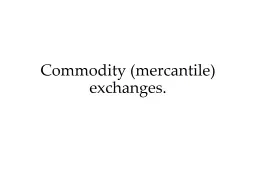PPT-Multi-commodity Flows and Cuts in
Author : myesha-ticknor | Published Date : 2018-01-07
Polymatroidal Networks Chandra Chekuri Univ of Illinois UrbanaChampaign Joint work with Sreeram Kannan Adnan Raja Pramod Viswanath UIUC ECE Department Paper
Presentation Embed Code
Download Presentation
Download Presentation The PPT/PDF document "Multi-commodity Flows and Cuts in" is the property of its rightful owner. Permission is granted to download and print the materials on this website for personal, non-commercial use only, and to display it on your personal computer provided you do not modify the materials and that you retain all copyright notices contained in the materials. By downloading content from our website, you accept the terms of this agreement.
Multi-commodity Flows and Cuts in: Transcript
Download Rules Of Document
"Multi-commodity Flows and Cuts in"The content belongs to its owner. You may download and print it for personal use, without modification, and keep all copyright notices. By downloading, you agree to these terms.
Related Documents














